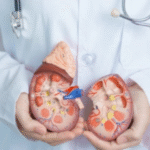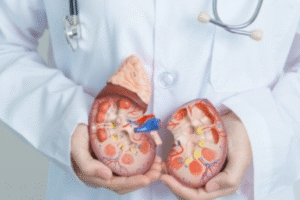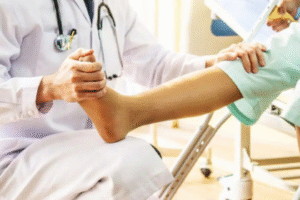VA Remote Patient Monitoring (RPM) is becoming integral to healthcare transformation, particularly within the Veteran Health Administration (VA). It represents a significant shift in medical service delivery by incorporating technology to empower veterans to manage their health conditions in a comfortable environment—their homes.
Understanding Remote Patient Monitoring (RPM)
Remote Patient Monitoring involves using digital technologies to Gather and record patients health information, at a site then send it electronically to healthcare professionals. at a different location. This is increasingly vital in veteran healthcare, where managing long term health issues such, as diabetes, hypertension and heart problems. is essential. By using devices such as blood pressure monitors, glucose meters, and pulse oximeters, veterans can transmit crucial health data to VA healthcare providers without an in-person visit.
Accessibility and Convenience
RPM offers enhanced accessibility to healthcare services, particularly beneficial for veterans living in rural or underserved areas. In many cases, traveling to a VA facility can be taxing or impossible due to physical limitations or long distances. RPM provides an essential service by bridging this gap, ensuring veterans receive continuous care without frequent travel.
Improved Chronic Disease Management
RPM offers immense advantages for managing chronic diseases. Veterans can consistently monitor their health status, catching potential issues before they become serious. For instance, regular blood pressure monitoring can prevent complications of hypertension by alerting healthcare providers to any concerning trends. This proactive approach helps maintain stable health status and reduces hospital admissions and visits to emergency departments, therefore cutting healthcare costs.
Enhanced Patient Engagement and Empowerment
RPM fosters a collaborative healthcare environment where veterans actively participate in their health management. With easy access to personal health data, veterans can better understand their conditions, leading to more informed decisions about their lifestyles and treatments. This empowerment increases compliance with treatment plans and encourages healthier living patterns.
Tailored and Personalized Care
One remarkable benefit of RPM is its capacity to deliver personalized healthcare. Data collected through RPM allows healthcare providers to tailor interventions based on real-time data, enhancing clinical outcomes. For example, veterans who monitor their weight and activities for chronic conditions such as heart failure can receive immediate adjustments to their treatment before serious complications develop.
Psychological Health Monitoring
In addition to physical health, RPM can extend its benefits to mental health care. Veterans can engage in remote consultations with mental health professionals, participate in therapy sessions, and receive critical support via digital platforms. This approach minimizes stigma and increases privacy for veterans who might be reluctant to seek mental health services.
Cost-Efficiency
Implementing RPM within the VA system leads to substantial cost savings. By reducing preventable hospital admissions, minimizing in-person visits, and ensuring better disease management, RPM contributes to more efficient resource allocation. These economic benefits also extend to veterans, who save on travel expenses and other incidental costs associated with frequent hospital visits.
Challenges for Implementation
While RPM offers several benefits, its implementation is challenging. Some of these include upfront costs of equipment and training, ensuring data security and privacy, and potential technical difficulties in transmitting data. With the progress of technology and its increasing affordability barriers become less significant.
The Future of VA Remote Patient Monitoring
The future of RPM looks promising within the VA healthcare system. With an increasing number of veterans needing medical care due to aging baby boomers and returning service members from recent conflicts, remote monitoring will become an essential aspect of meeting their needs. Advanced technologies like wearable Bluetooth devices will further enhance RPM capabilities.
Technological Advancements Driving RPM
Continuous technological advancements facilitate the success of RPM in veteran healthcare. With innovations in wearable devices, mobile health apps, and secure communication platforms, the VA can remotely provide veterans with high-quality healthcare experiences. Moreover, integrating electronic health records (EHRs) ensures that all data is accessible to healthcare providers, fostering seamless and coordinated care. This synchronized approach significantly reduces the likelihood of medical errors and duplication of tests.
Challenges and Considerations
Despite its benefits, implementing RPM also comes with challenges. Ensuring data security and privacy is of the utmost importance as personal health data is transmitted electronically. The VA must adhere to rigorous security protocols to protect sensitive information from breaches. Furthermore, adequate training is needed for both veterans and healthcare providers to utilize RPM tools effectively. Additionally, there may be barriers in terms of technological literacy and access to devices, particularly for older veterans.
Future Prospects of RPM in Veteran Healthcare
The future holds promising prospects for RPM in veteran healthcare. As technology continues to evolve, RPM’s capabilities will expand, incorporating more sophisticated tools and platforms. Innovations like predictive analytics and telehealth services The improvement is anticipated to have an impact on welfare and results. The VA’s commitment to integrating technology in healthcare delivery will continue to benefit veterans and improve their overall health and well-being.
Government policies and funding dedicated to enhancing telehealth services in the VA will play a crucial role in the advancement of RPM. Collaborations with technology companies can also drive innovation and ensure the development of user-friendly, effective tools for veteran care. As RPM proves its effectiveness, it will likely become a standard component of healthcare delivery, providing veterans with accessible, convenient, and tailored care. So, RPM has the potential to significantly improve the health outcomes and quality of life for our nation’s heroes. With continued advancements and support from all stakeholders, RPM can pave the way for a more efficient and patient-centered approach to veteran healthcare.
Conclusion
DocVA Integrating Remote Patient Monitoring within the VA healthcare system revolutionizes veteran healthcare by offering a patient-centered approach emphasizing accessibility, efficiency, and personalization. While challenges exist, the benefits of RPM are undeniable—improving chronic disease management, enhancing patient engagement, and reducing healthcare costs. As technology and healthcare continue to converge, the potential for RPM to transform veteran healthcare delivery is endless, setting a benchmark for future advancements in digital health solutions. Through sustained efforts and continued innovation, the VA is positioned to provide exceptional care to veterans, irrespective of their geographical location or healthcare needs.














